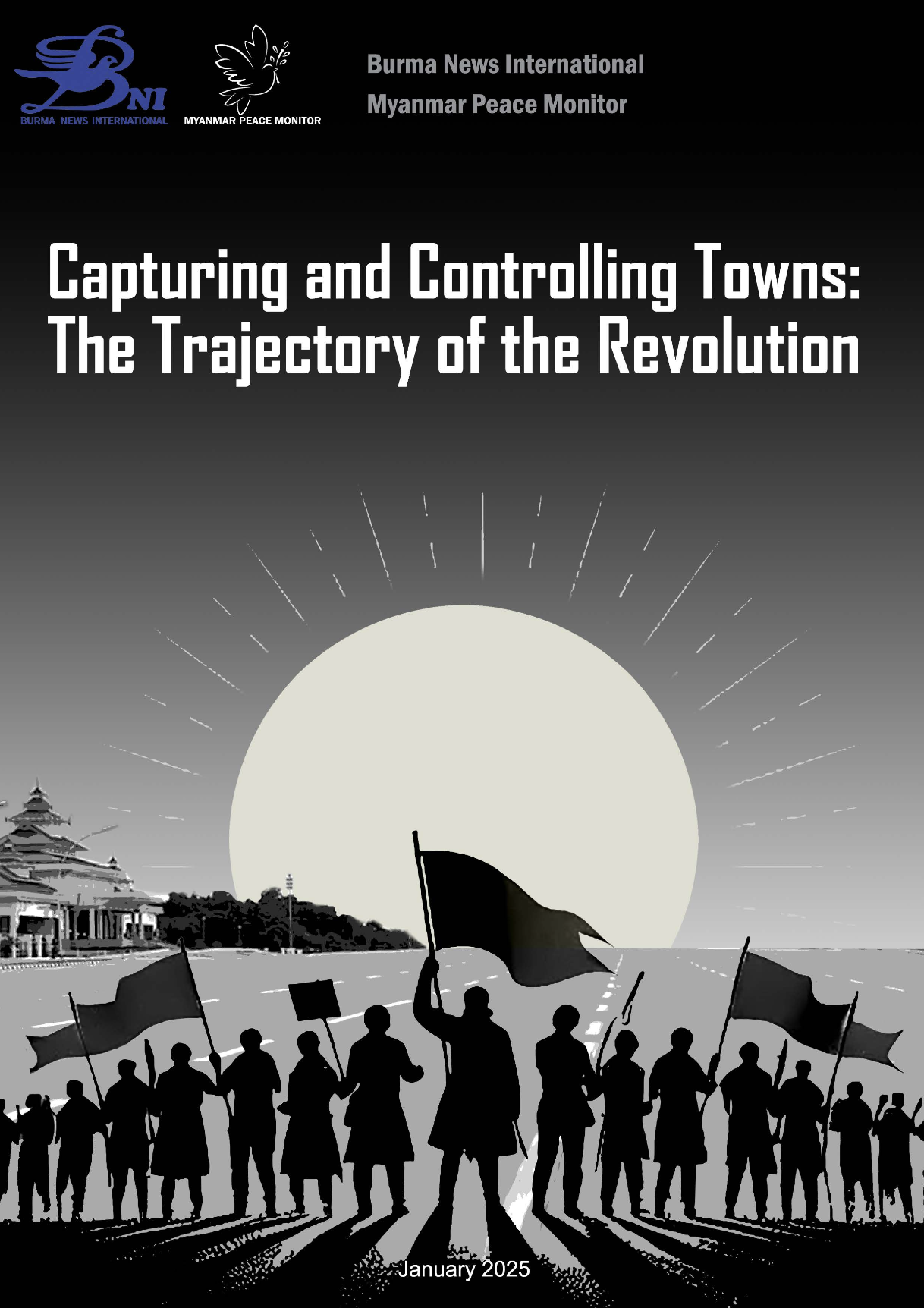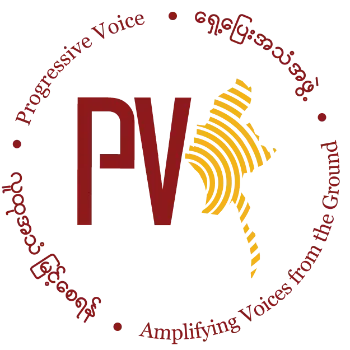Capturing and Controlling Towns: The Trajectory of Revolution
31 January 2025


According to BNI-MPM data, the town takeovers began in Mindat Township, Chin State, in July 2021. On 24 July 2021, The Chinland Defense Force (CDF)- Mindat launched an attack on the police station in M’Kuiimnu. The revolutionary forces captured the town without firing a single shot, as seven police officers and junta soldiers, including a captain, surrendered.
Mese was the second town captured by the revolutionary forces prior to the start of “Operation 1027”. A combined force launched an attack and successfully captured all junta camps in Mese Township, in the Thai-Myanmar border in Karenni (Kayah) State, between 13 and 24 June 2023. On the morning of 24 June, the revolutionary forces captured the town without firing a single shot, as 18 junta soldiers from the military council camp at Myanmar-Thai Border Post No. 13 (BP-13) in Mese Township surrendered.
After the launch of “Operation 1027” on 27 October 2023, town takeovers by revolutionary forces have become increasingly frequent across Myanmar, including in northern Shan State. Over the 15 months from November 2023 to January 2025, there was not a single month without town takeovers. The term “Sold Out” has even become a slang expression among the people. It is important to note that during these 15 months, the revolutionary forces successfully captured and controlled 95 towns from the military council.
Looking at the town take-overs in both mainland and mountainous areas, the revolutionary forces captured 24 towns in northern Shan State, 23 in Arakan State, 15 in Chin State, 14 in Kachin State, five in Sagaing Region, five in Karenni (Kayah) State, four in Mandalay Region, three in Karen State, and one town each in Bago Region (East) and southern Shan State.
The towns captured and controlled by respective revolutionary forces are as follows: 25 by the United League of Arakan/Arakha Army (ULA/AA), 16 by the Kachin Independence Organization/Kachin Independence Army (KIO/ KIA), 12 by the Palaung State Liberation Front / Ta’ang National Liberation Army (PSLF/TNLA), 10 by the Myanmar National Democratic Alliance Army (MNDAA), seven by PDF battalions and units under the Ministry of Defense (MOD) of the National Unity Government (NUG), seven by the Chin National Front/Chin National Army (CNF/CNA) and allied forces, six by the Karenni Revolutionary Force (KRF), four by the Karen National Union (KNU), four by the Chin Brotherhood (CB), two by the United Wa State Party/ United Wa State Army (UWSP/UWSA) and one each by Chinland Defense Force (CDF)-Mindat, Mara Defence Force/Maraland Territorial Council (MDF/MTC), and the Zomi Revolutionary Army- Eastern Command (ZRA-EC). Looking at the events of each town capture, it is evident that joint operations between revolutionary forces are the most common approach.
The report covers the following topics:
Reasons behind the offensives to capture towns
The significance of captured towns
The towns held for years
The towns recaptured by the junta
Failed offensives to capture towns
Offensives to capture towns and public security
Capturing and controlling towns: The trajectory of the revolution
Looking towards a federal union amidst offensives to capture towns.
Download the pdf in English | Myanmar
View the original
Announcements
21 May 2025
Open letter: Malaysia must lead ASEAN with principle, not hypocrisy, to address the Myanmar crisis

Progressive Voice is a participatory rights-based policy research and advocacy organization rooted in civil society, that maintains strong networks and relationships with grassroots organizations and community-based organizations throughout Myanmar. It acts as a bridge to the international community and international policymakers by amplifying voices from the ground, and advocating for a rights-based policy narrative.